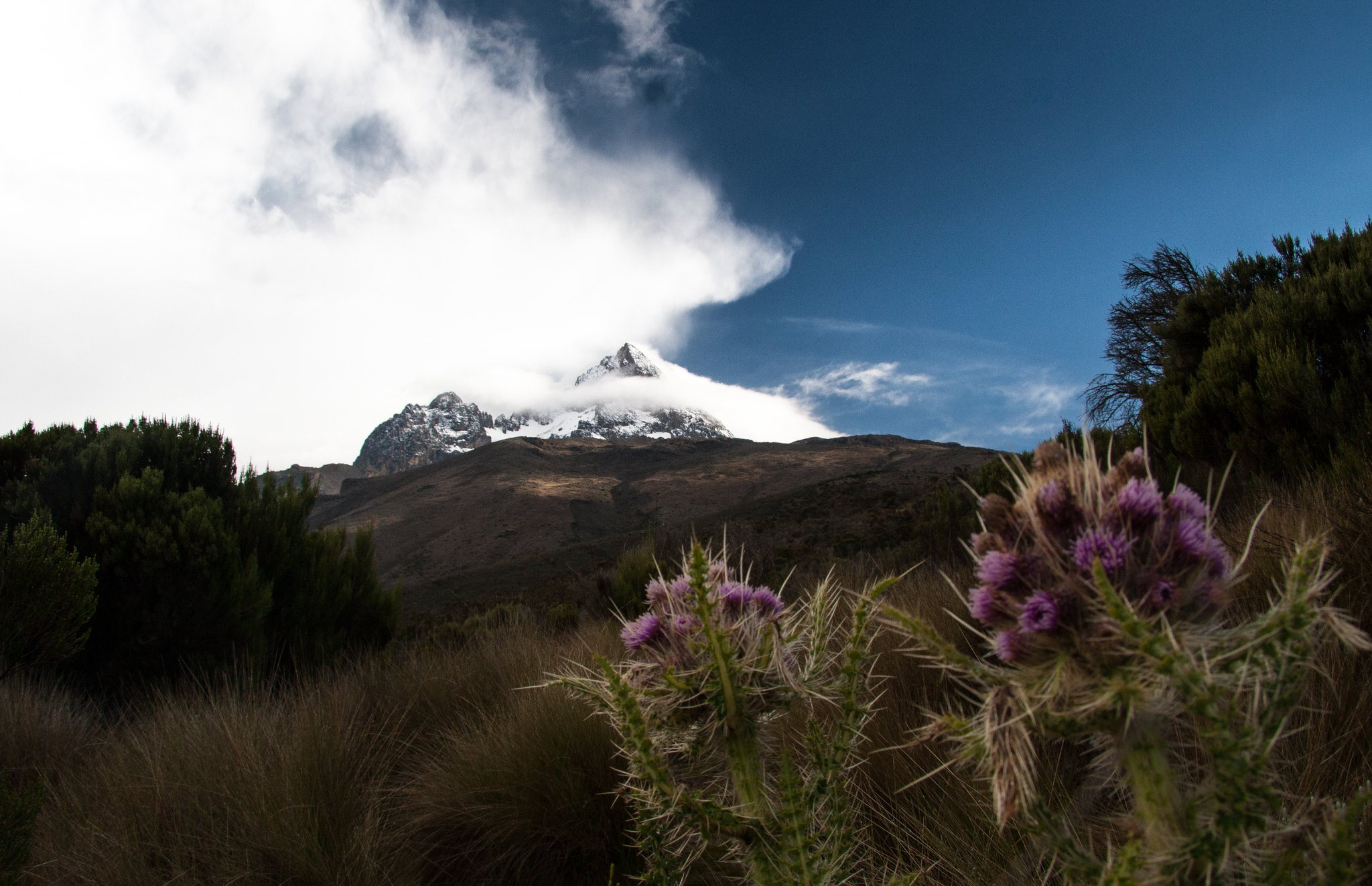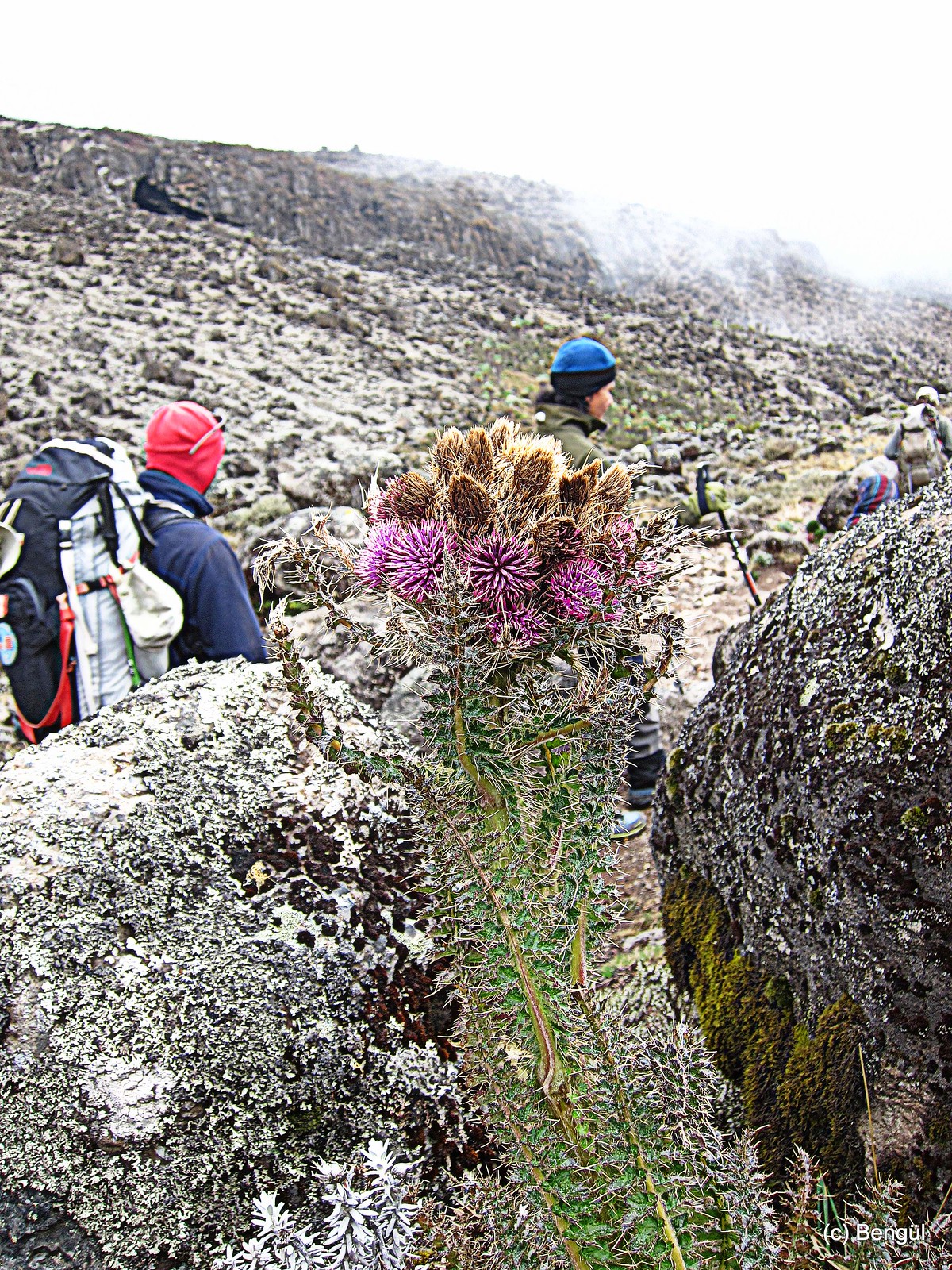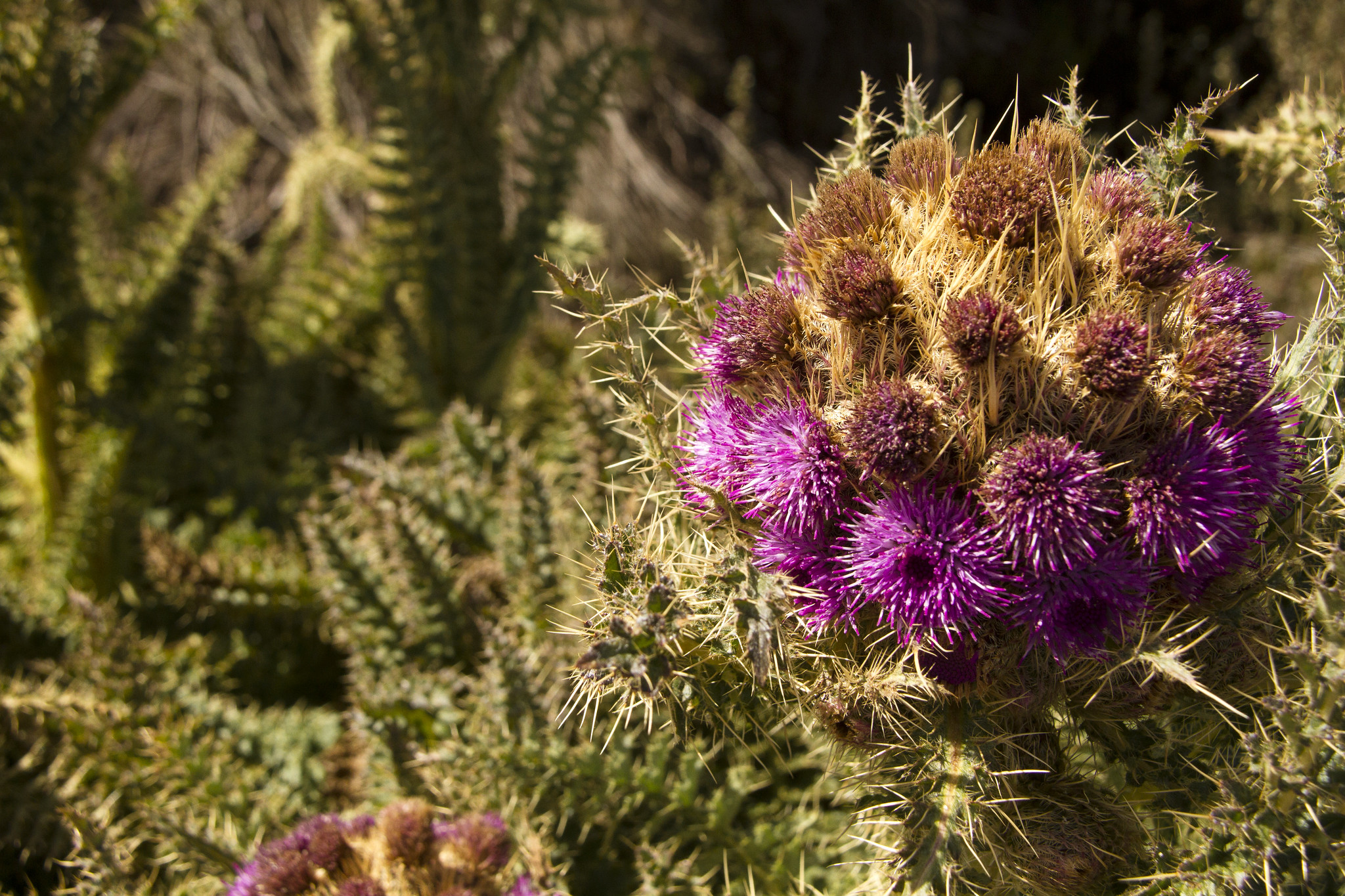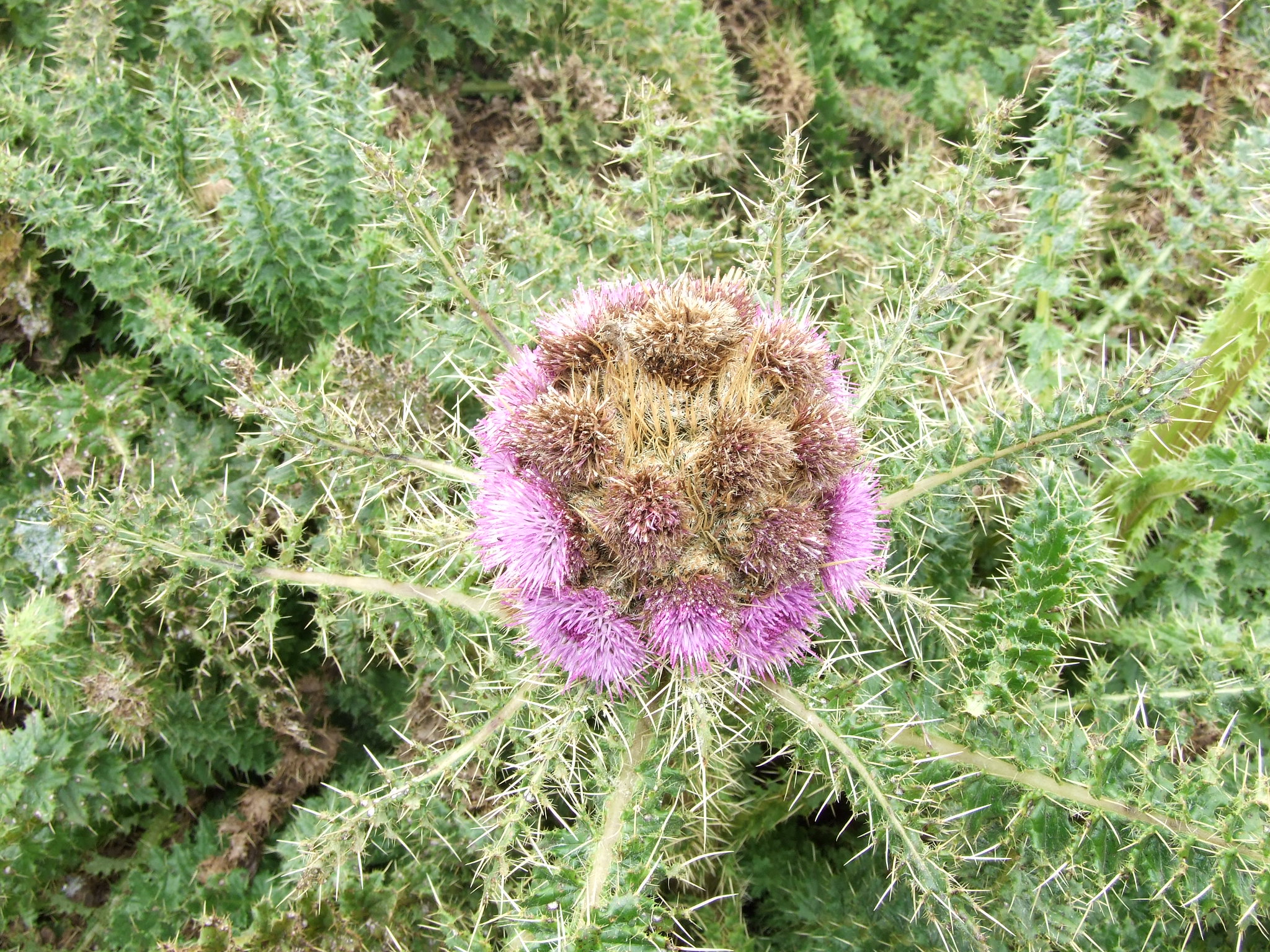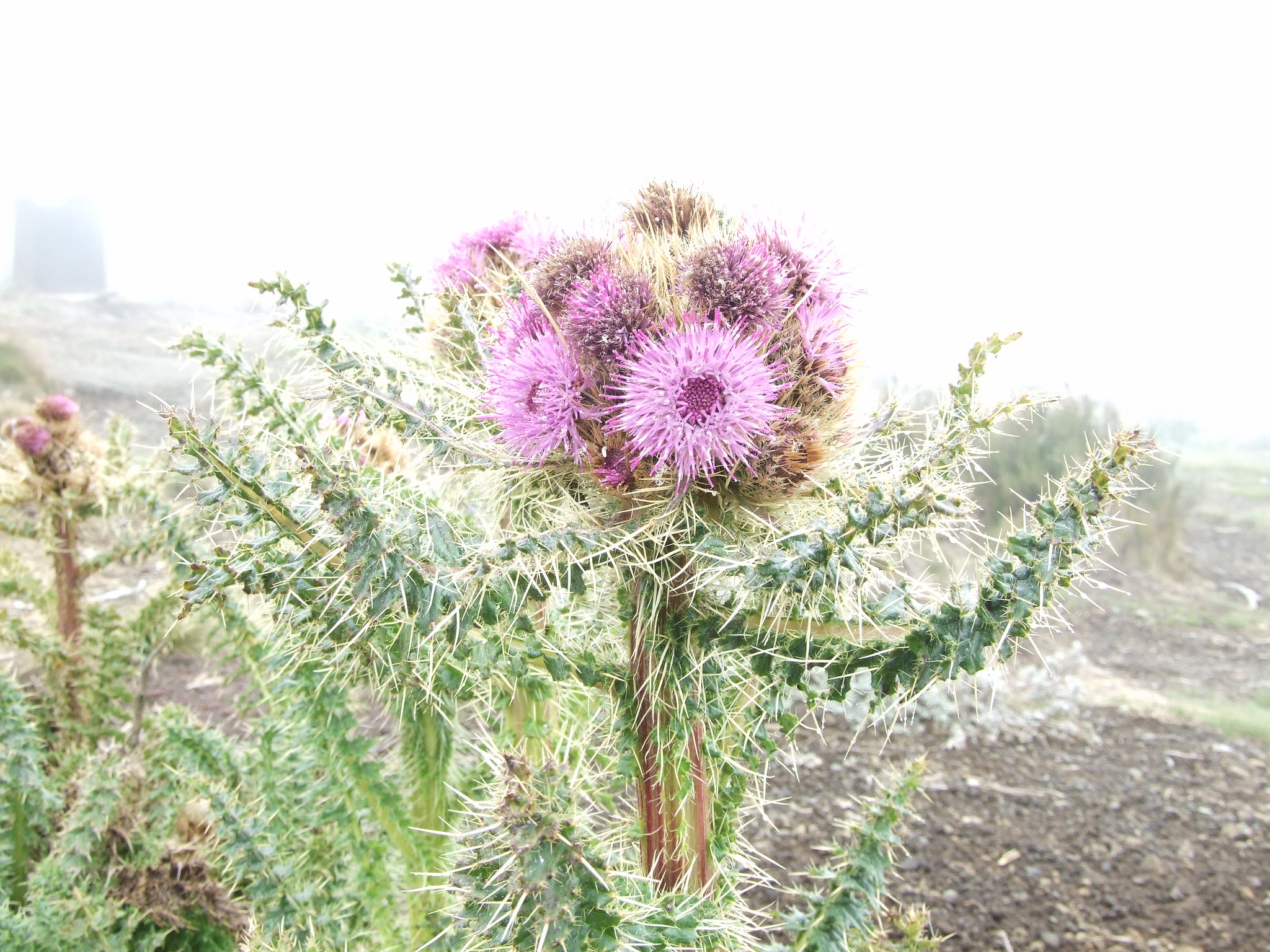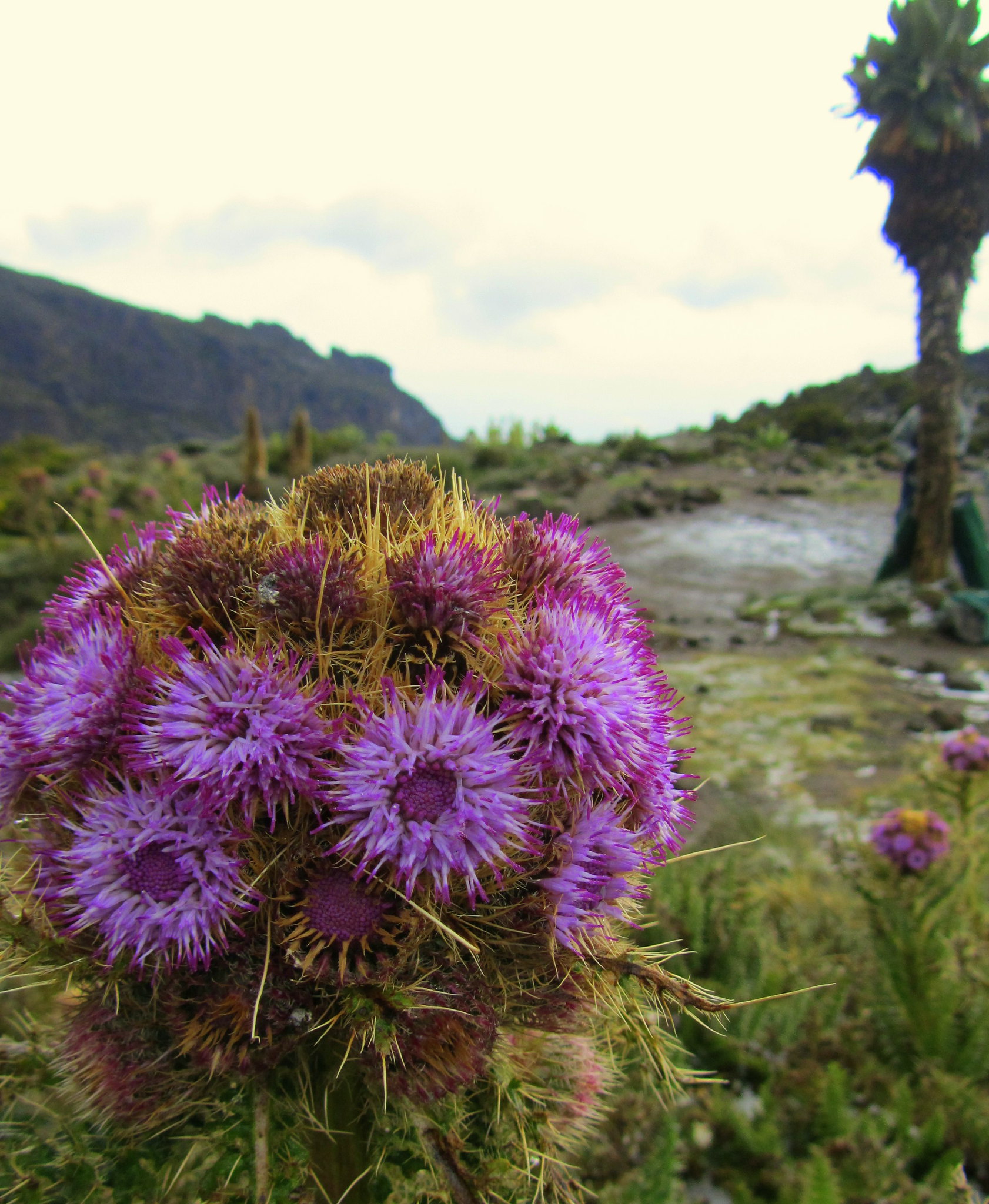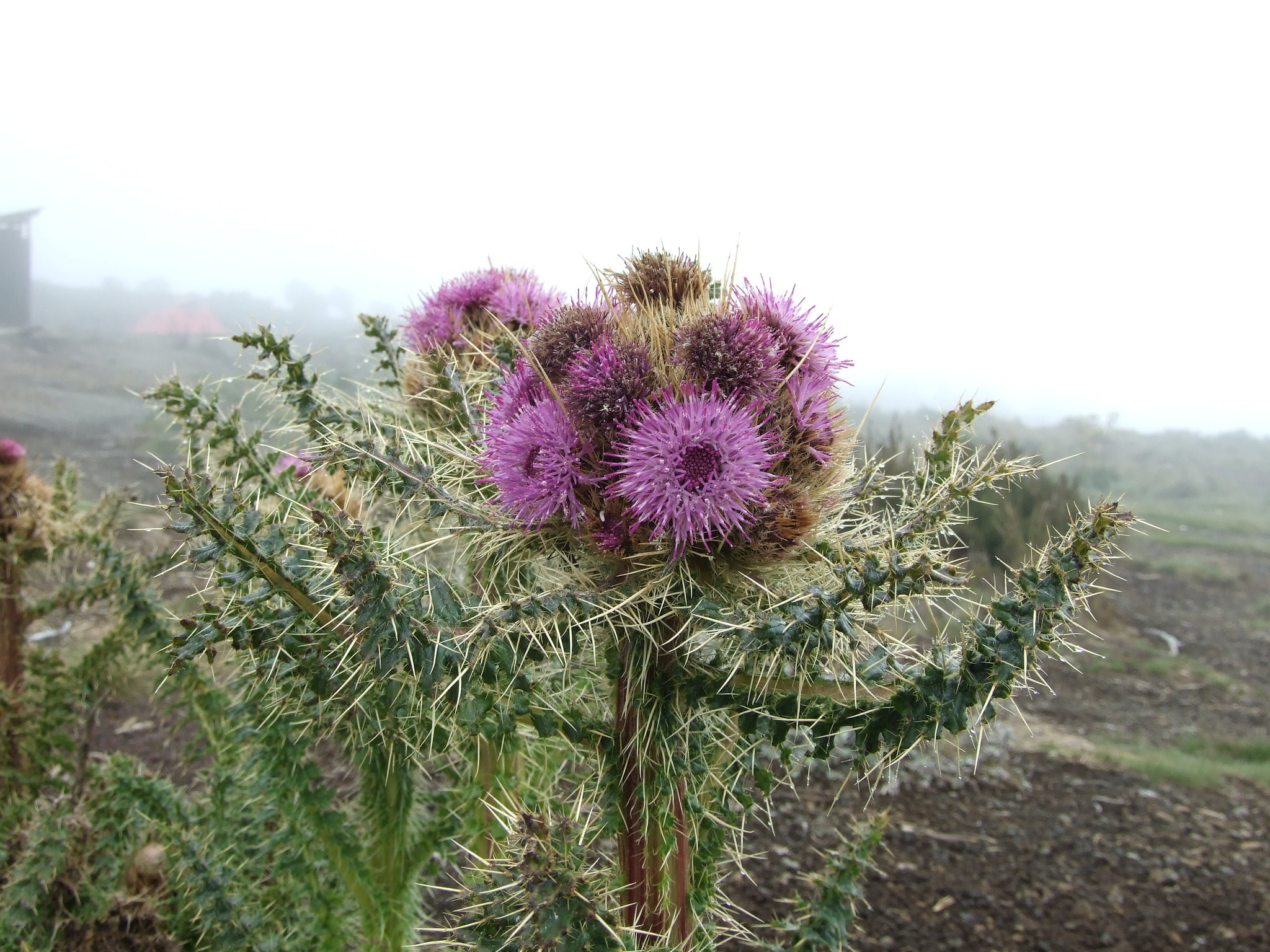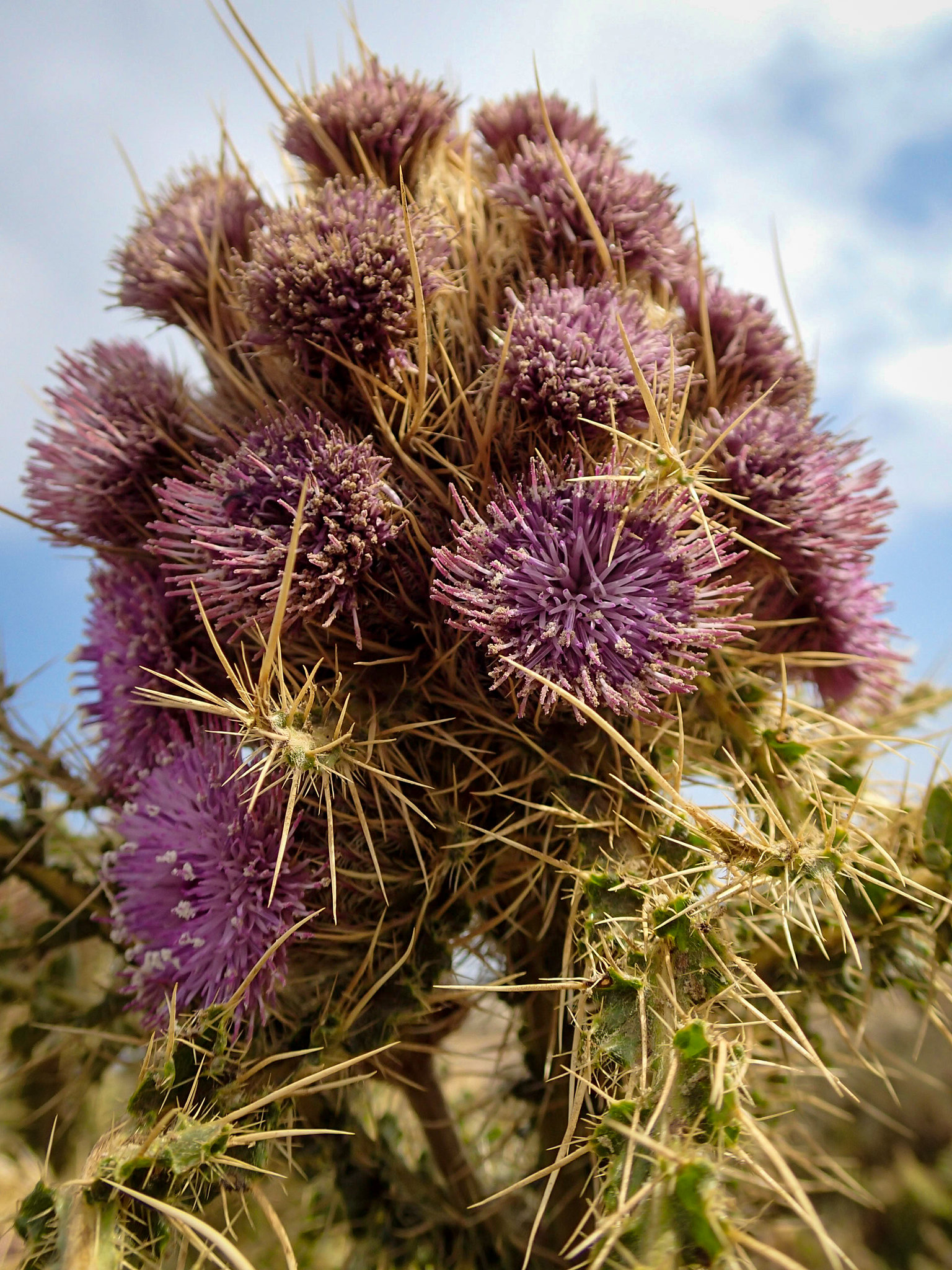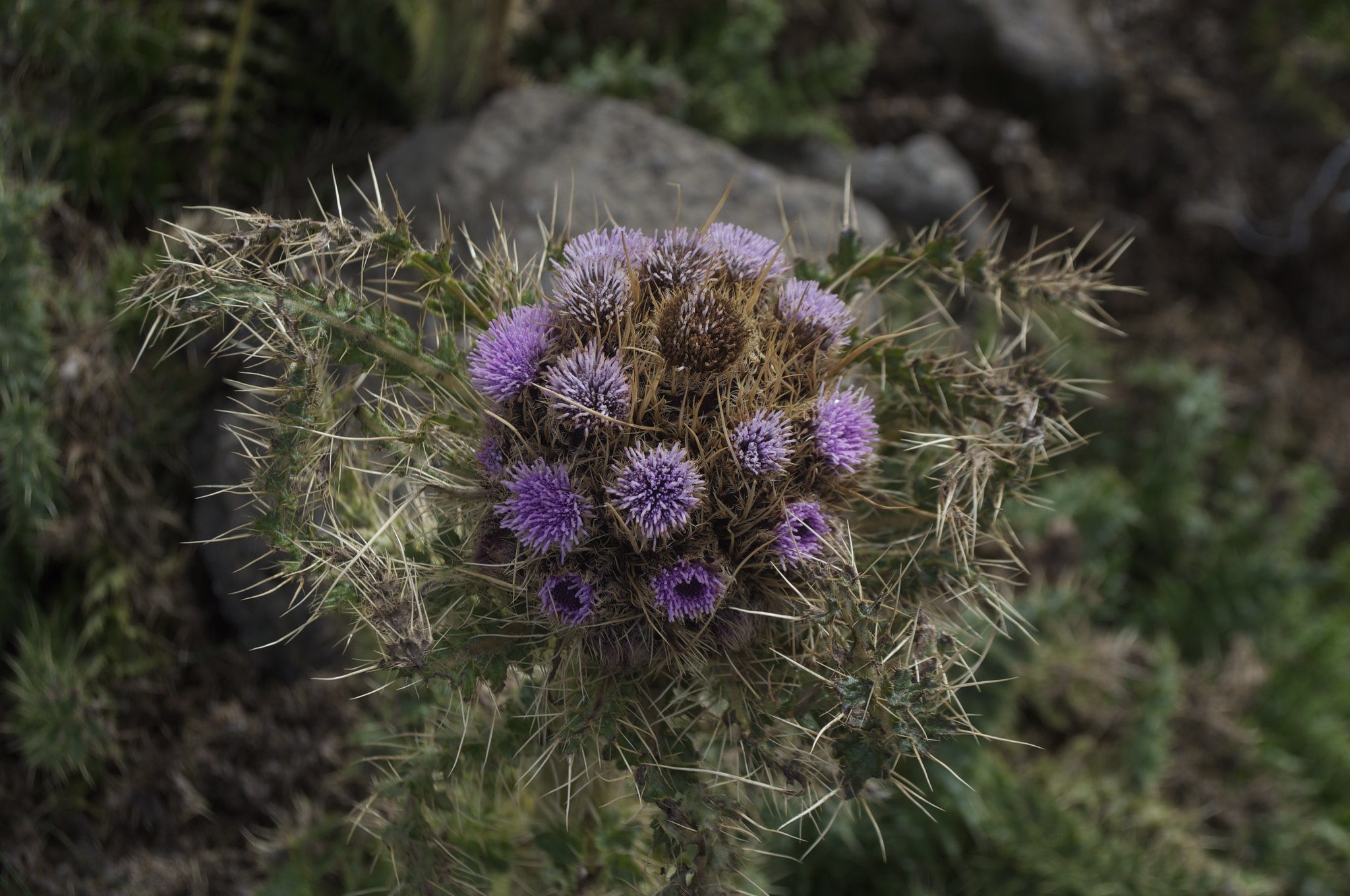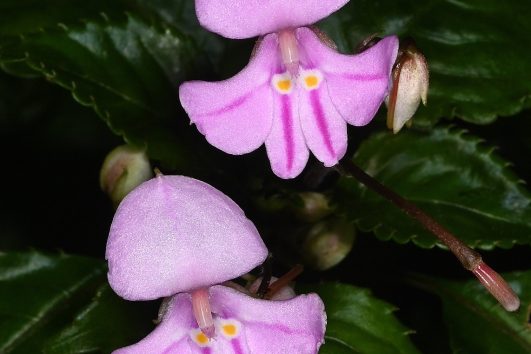Carduus keniensis, commonly known as the Afroalpine thistle, is a fascinating species native to high-altitude regions of East Africa, particularly around Mount Kenya and Mount Kilimanjaro.
Carduus keniensis is a species of thistle belonging to the genus Carduus. Like other members of the thistle family, it is characterized by its spiky appearance, which helps protect it from herbivores. The plant typically features a rosette of spiny leaves at the base, with tall, branched stems that bear purple flower heads. These flowers are not only visually striking but also play an important role in the local ecosystem as a food source for various pollinators, including bees and butterflies.
 Taxonomy and Synonyms: Originally named Carduus keniensis, it’s now recognized under the synonym Afrocarduus keniensis, indicating its reclassification within the Afrocarduus genus, which is specific to African thistles.
Taxonomy and Synonyms: Originally named Carduus keniensis, it’s now recognized under the synonym Afrocarduus keniensis, indicating its reclassification within the Afrocarduus genus, which is specific to African thistles.- Physical Characteristics:
- Growth: This plant can grow quite tall, often reaching heights where it stands out in its alpine environment. It features spiny foliage and a robust stem, typically ending in a solitary, vivid purple bloom.
- Adaptations: Its spiny nature serves as a defence mechanism against herbivores, while its ability to thrive in cold, varying moisture levels showcases its adaptation to montane ecosystems.
- Habitat:
- Location: Found in the high-altitude grasslands of Africa, particularly around Mount Kenya, where it thrives in conditions that would be inhospitable to many other plants.
- Ecological Role:
- Resilience: Its presence in such extreme environments highlights its ecological importance in maintaining biodiversity in alpine zones. The plant’s hardy nature contributes to the ecosystem’s resilience against climate fluctuations.
- Cultural or Local Significance: While direct cultural references to Carduus keniensis are sparse, thistles in general can have symbolic meanings or uses in local cultures, often representing protection or resilience due to their spiny nature.
- Scientific Interest:
- Study: Given its unique habitat and adaptations, Carduus keniensis might be of interest for studies on plant evolution, particularly how species adapt to high-altitude environments.
- Conservation Status: While not explicitly detailed in the provided information, its specificity to high-altitude environments might make it sensitive to climate change impacts, potentially affecting its conservation status.
Habitat and Growing Conditions
Carduus keniensis thrives in high-altitude environments, making it well-suited to the alpine and subalpine zones of Kilimanjaro. The plant is typically found between altitudes of 2,500 to 4,000 meters (8,200 to 13,100 feet). In these zones, the climate is cooler, and the soil is well-drained, providing ideal conditions for Carduus keniensis to grow. The plant is commonly found in open areas with plenty of sunlight, such as grasslands and rocky slopes, where it can easily spread its seeds.
Ecological Significance
The presence of Carduus keniensis on Kilimanjaro is vital for several reasons:
- Pollinator Support: The flowers of Carduus keniensis are a key nectar source for various pollinators, including bees, butterflies, and other insects. By attracting these pollinators, the plant helps support the reproductive cycles of other flowering plants in the area.
- Erosion Control: The root systems of Carduus keniensis help stabilize the soil on the mountain’s slopes, reducing the risk of erosion. This is particularly important in the fragile alpine environments where vegetation cover is sparse.
- Biodiversity Indicator: The presence of Carduus keniensis is an indicator of a healthy, biodiverse ecosystem. Its survival depends on specific environmental conditions, so its presence suggests that these conditions are being met, which is beneficial for other plant and animal species in the area.
Additional information
| Habitat | Heath & Moorland Zone |
|---|

